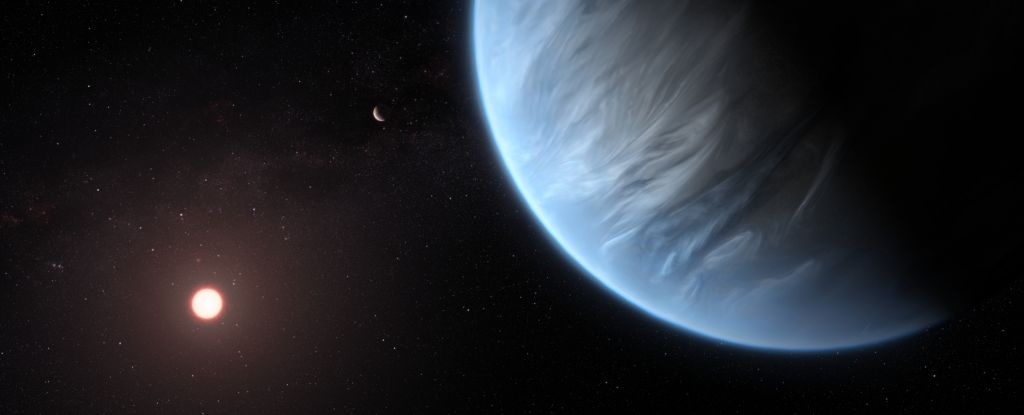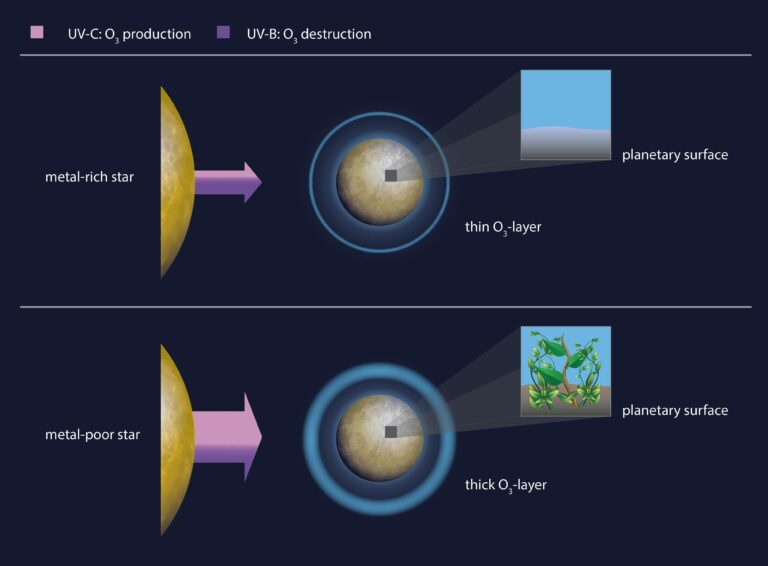Metals play a vital role in the forming of life forms.
"Artist's impression of an Earth-like exoplanet orbiting a Sun-like star. (ESA/Hubble, M. Kornmesser)" (ScienceAlert.com/Scientists Think They've Narrowed Down The Star Systems Most Likely to Host Life)
Metals have a big role in life forms forming. The reason for that is iron and other metals are vital for magnetic fields around exoplanets. If the planet has no magnetic field it cannot host life. And that's why the life-search SETI program must keep focusing on planetary systems. There are lots of metals. If there are no metals in some planetary systems there are not enough strong magnetic fields around the planets in the habitable zone.
The strong solar wind will blow the atmosphere off from the planets. That have no magnetic fields. Of course, a planet can have a strong gravitational field but the problem is that gravitation pulls plasma showers to the planet's shell. And if the magnetic field will not whip that plasma away it will burn the planet immediately. That plasma also pulls the atmosphere of the planet away from it.
"A diagram illustrating the effect higher UV radiation has on the oxygen-rich atmosphere of an exoplanet. (MPS/hormesdesign.de) (ScienceAlert.com/Scientists Think They've Narrowed Down The Star Systems Most Likely to Host Life)
An ideal planetary system for hosting lifeforms is the metal-poor star that metal-rich planets orbit.
But researchers think that metal-poor stars can be more suitable for hosting life than metal-rich stars on their planets. So the best combination would be a metal-rich planet that orbits metal-poor stars. The strong magnetic field protects the atmosphere. And metal-poor star sends radiation that does not break oxygen atoms as effectively as radiation that comes from metal-rich stars.
The reason for that is the UV radiation that metal-rich star sends more UVA and UVB radiation than UVC radiation. That means the UV radiation that leaves from the metal-rich star travels deeper in cells and the atmosphere than the UV radiation that the metal-poor radiation sends. So the ideal planet for lifeforms is the planet that orbits a metal-poor star, has a metal-rich structure, and has a thick atmosphere where are clouds.
Today we know thousands of exoplanet systems. And we know that all of them cannot be harbors of life. The size of the exoplanet with the distance of the exoplanet from its star determines if liquid water is possible on the planet. The planet can be locked, and the temperature on its shell can be very high. But there is ice on the planet because strong gravitation turns water into ice. Same way strong gravitation can keep water liquid at very high temperatures. And then the weak gravitation can keep water liquid in freezing worlds.
The locked planets can host lifeforms on their terminators. But the problem is that those planets can sometimes spin. And that can be a catastrophe. But the most important thing is the magnetosphere. Without a magnetosphere, solar wind hits the shell of the planet. That solar wind blows the atmosphere away and breaks water molecules. The magnetic field pushes plasma that comes from the star away. And that thing requires metals. Without metals, the planet's core cannot form a generator that makes the magnetic field possible.
https://www.sciencealert.com/scientists-think-theyve-narrowed-down-the-star-systems-most-likely-to-host-life






No comments:
Post a Comment
Note: Only a member of this blog may post a comment.